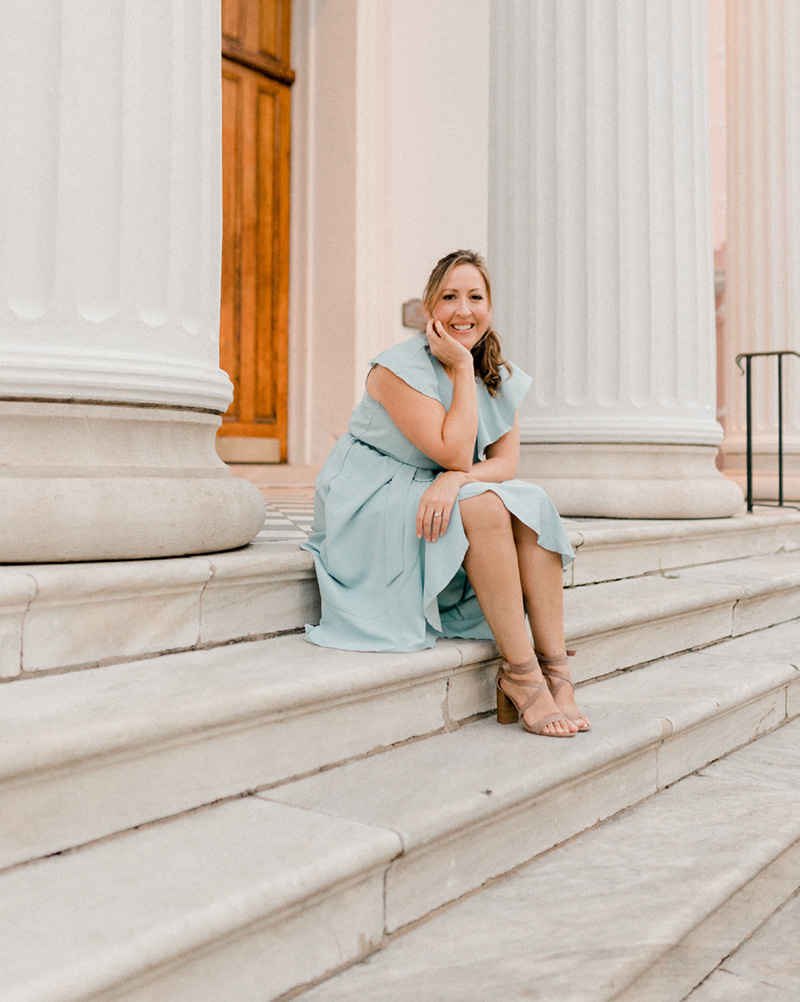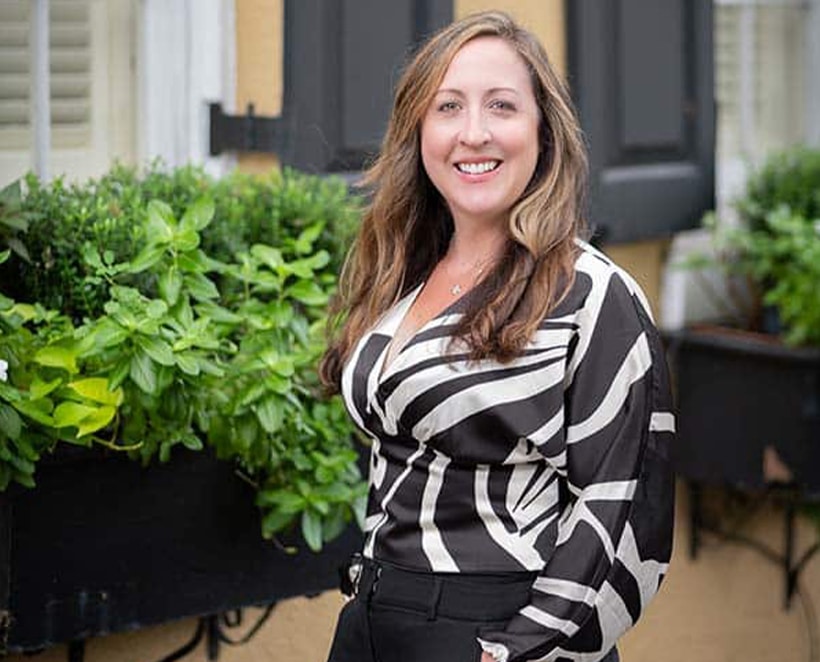
Buy a home at a reasonable rate with a VA loan in Seabrook Island, SC
VA loans were established prior to the end of World War II and have since assisted numerous veterans, service members, and military families in fulfilling their dream of owning their a home. In recent times, the program has become increasingly significant, with VA loan volume skyrocketing and offering substantial financial advantages that enable countless veterans to purchase homes, thereby making homeownership a possibility for those who may not have qualified otherwise.
If you sacrificed comfort and security to help protect our great nation, Mission One Mortgage thanks you for your service. We believe that there's no greater honor than to serve those who have served our country. We're not afraid to go above and beyond for our veterans because that's exactly what they did for us.
What is a VA Loan in Seabrook Island, SC?
A VA loan is a mortgage option that is backed by the government and available to Veterans, service members, and surviving spouses. It is offered by private lenders such as banks and mortgage companies and not directly by the Department of Veterans Affairs.
VA home loans come with competitive interest rates and terms and can be used to purchase a variety of properties, including:
- Single-Family Homes
- Condominiums
- Multi-Unit Properties
- Manufactured Homes
- New Construction Homes
One of the great benefits of VA loans is that eligible Veterans can buy a home with no down payment, no mortgage insurance, lenient credit requirements, and the lowest average fixed rates in the market.

This program was created by the federal government to make it easier for those who have served our country to become homeowners, and it is widely considered the strongest benefit program available for this purpose.
What are the Biggest Benefits of Having a VA Loan in Seabrook Island, SC?
At Mission One Mortgage, we work with many Veterans who know that VA loans exist but don't quite understand the full range of benefits they provide. If that sounds familiar, keep reading. This section was written especially for you.
01
Benefit:
No Down Payment Needed
One of the standout benefits of the VA Loan program is that qualified borrowers can purchase a home without having to make a down payment up to the conforming loan limit of their county. This is a significant advantage over conventional and FHA loans, which typically require minimum down payments of 5 percent and 3.5 percent, respectively.
For example, on a $400,000 mortgage, a conventional loan would require a $20,000 down payment, while an FHA loan would require $14,000. Saving up that kind of cash can take service members and veterans years, but with the VA Loan, they can pursue homeownership without having to scrape and stockpile for years on end.
03
Benefit:
Less Strict Credit Requirements
It's important for military buyers to stay informed about credit score requirements when considering home financing options. Although credit score requirements have eased up a bit, it's still necessary to meet certain benchmarks set by conventional and FHA lenders. However, even meeting these benchmarks can be a challenge for many buyers.
Most VA lenders require a credit score of at least 620, which falls in FICO's "Fair" credit score range. Borrowers will typically need to meet a higher threshold for conventional mortgages, particularly if they want to secure a low-interest rate. It's worth checking out VA Loan rates to learn more about financing options.
Despite common misconceptions, military buyers don't need a perfect credit score to obtain financing. While a higher credit score can certainly help, it's important to remember that VA loans in Seabrook Island, SC are designed to help military members and veterans access affordable housing.
05
Benefit:
Help with Closing Costs
Closing costs are an inevitable part of the home-buying process, no matter what type of mortgage product you choose. However, if you're a veteran, you may be pleased to know that the VA places limits on the fees and costs you're required to pay at the time of closing. Additionally, homebuyers have the option to ask sellers to cover all loan-related closing costs, as well as up to 4 percent of the purchase price for other expenses like prepaid taxes, insurance, and collections.
02
Benefit:
No Need for Private Mortgage Insurance
Coming up with a down payment can be challenging for both conventional and FHA homebuyers. In addition, they are required to pay for mortgage insurance unless they can make a sizable down payment, usually 20% of the purchase price. For instance, on a $400,000 mortgage, this would be a staggering $80,000 in cash.
FHA loans carry an upfront mortgage insurance premium and annual mortgage insurance. The latter now lasts for the life of the loan. On the other hand, conventional homebuyers will pay this monthly cost until they have built up enough equity, which can take several years.
Fortunately, VA loans do not require any mortgage insurance. However, there is a mandatory funding fee that goes directly to the Department of Veterans Affairs. Borrowers with a service-connected disability are exempt from paying this fee, which helps keep the program going for future generations.
04
Benefit:
Bankruptcy and Foreclosure
If you've experienced a financial setback such as a foreclosure, short sale, or bankruptcy, you may be worried about your chances of securing a VA home loan. However, don't lose hope just yet. With VA loans, it's still possible to be eligible for a home loan just two years after a foreclosure, short sale, or bankruptcy. In some cases, veterans who file for Chapter 13 bankruptcy protection can be eligible for a VA loan just a year after the filing date.
It's worth noting that the waiting periods for conventional or FHA financing can be significantly longer than those for VA loans. Additionally, even if you've lost a VA-backed mortgage to foreclosure, you may still be eligible for another VA loan.
So, if you're a veteran who's experienced a financial setback but still dreams of owning a home, don't give up hope. Explore your options and see if a VA loan with Mission One Mortgage could be the solution you need.
06
Benefit:
DTI Ratio Flexibility
It's important to keep in mind that VA lenders typically prefer borrowers to spend no more than 41 percent of their gross monthly income on major debts, such as mortgage payments or student loans. However, it's possible to get a VA home loan even if you have a higher DTI ratio. Some lenders may offer up to 55 percent or more depending on your credit score and ability to meet additional income requirements. This can give homebuyers more flexibility and greater purchasing power when it comes to finding their dream home.
Remember - if you have any questions about the benefits you just read about - like what credit score Mission One Mortgage requires for a VA loan - contact our office today. It would be our pleasure to help you navigate the VA loan process, one step at a time.
How to Determine Your VA Loan Eligibility
One of the most common questions we get at Mission One Mortgage revolves around VA loan eligibility. Who is actually eligible for this type of loan? What are the requirements for getting a VA loan? If you meet the following requirements, chances are you'll be eligible for a VA loan.
- If you have completed 90 days of service during wartime or 181 days of service during peacetime, you may qualify as an active-duty military member or veteran.
- If you have served in the National Guard or Reserve for a minimum of six years, or have completed 90 days of active duty under Title 32 orders, with at least 30 of them being consecutive, you may be eligible for a VA loan in Seabrook Island, SC.
- If your spouse was a service member who passed away while on active duty or due to a service-connected disability, and you haven't remarried, you may be eligible for a VA loan. In some cases, surviving spouses who remarried after the age of 57 and after Dec. 16, 2003, may also be eligible. Spouses of prisoners of war or service members missing in action may also be eligible for VA loans, as well.
- You meet the necessary requirements for credit and income to be eligible for a VA loan. It's important to note that while the VA doesn't set a minimum credit score for VA loans, individual lenders may have their own standards. In addition to credit, your lender will also evaluate your income and debts to assess your ability to repay the mortgage.
- The property you're interested in purchasing complies with the necessary safety standards and building codes. It's also worth mentioning that in most cases, the borrower is required to make the residence their primary home within 60 days of purchase. However, there are certain circumstances in which this timeline can be extended up to 12 months.

Follow These 5 Steps to Begin the VA Home Loan Process
Curious what the general steps are for purchasing a home with a VA loan? You're not alone. Keep reading to get a feel for what you have to do to enjoy the wonderful benefits of homeownership.

When applying for a VA home loan benefit, the Certificate of Eligibility (COE) is an important document that verifies your eligibility to your lender. If you have already used your VA loan benefit in the past, a current COE can help you determine how much remaining entitlement you have. Additionally, it can ensure that your entitlement has been restored for previous VA-backed loans that were paid in full.
After you've applied for your COE, it's a good idea to examine your finances. We're talking about items such as income, expenses, credit profile, and your monthly budget. That way, you know for sure that you're ready to purchase a home.
As a veteran, you have the choice of going through a bank, credit union, or a private VA mortgage company like Mission One Mortgage. Most lenders will have different loan interest rates and fees, so it's important to shop around. Remember - Mission One specializes in VA loans in Seabrook Island, SC. Other lenders, such as large corporations and banks, often can't match the expertise and attention to detail that Mission One provides to veterans.
During this phase, it's a good idea to meet with a range of real estate professionals. Try to choose an agent who has experience processing and overseeing VA loans. Once you select an agent, you can bring your lender's pre-approval letter to their office and begin shopping.
This is the best part of the VA loan process, other than getting the keys to your new home. When looking for a house, remember to look at homes within your price range and budget. Lean on your real estate agent, friends, and family for help in your search.
A Word of Advice from Mission One Mortgage
If you're thinking about buying a home, it's important to weigh the pros and cons of homeownership. While renting can provide flexibility and less responsibility for maintenance, it comes with the risk of rent increases, potential property sales, and uncertainty about security deposit refunds.
On the other hand, owning a home can offer relatively stable mortgage payments and an opportunity to build long-term wealth for you and your family. Before making a decision, it's crucial to determine your priorities, such as your monthly budget for mortgage payments and other expenses like transportation and childcare. Ultimately, only you can determine what's best for your housing and financial needs.
The Key to Homeownership Starts with a VA Loan in Seabrook Island, SC
At Mission One Mortgage, we take immense pride in simplifying the mortgage process and ensuring that our clients experience minimal stress. We understand that navigating the world of mortgages can be daunting, which is why we are committed to making it as smooth as possible.
By choosing to work with us, you're not just getting a mortgage broker - you're selecting a partner who is devoted to your financial well-being and dedicated to helping you achieve your dream of homeownership. By working together, we can work through the VA loan process one step at a time.
That rings true for all of our clients, but especially the U.S. Veterans we serve. In fact, we specialize in VA mortgages and are proud to offer them to US Veterans, those on Active Duty, and their spouses. VA Loans are one of the best mortgages available, offering no down payment requirements, no PMI, and some of the most favorable rates and terms.
If you're ready to take the next big step in your life and provide stability for your family with a place to call home, contact our office today. You're closer to the dream of home ownership than you might think.
Want to know more?
Clarify your Queries Call Us Now! (843)822-5685
Latest News in Seabrook Island, SC
Seabrook Island developing marsh front protection plan to fight erosion
Melissa Rademakerhttps://www.live5news.com/2025/02/13/seabrook-island-developing-marsh-front-protection-plan-fight-erosion/
SEABROOK ISLAND, S.C. (WCSC) - Seabrook Island is working with a local coastal consulting firm to develop a plan to monitor, protect and restore its marsh to fight erosion.The Seabrook Island Environment and Wildlife Committee is in the final stages of reviewing plan drafts that balance property protection and marsh preservation since most of Seabrook Island’s marsh front lies on private property.“What we’re seeing out in the marshes and in the tidal ditches over the last three years, actually is a lot of eros...
SEABROOK ISLAND, S.C. (WCSC) - Seabrook Island is working with a local coastal consulting firm to develop a plan to monitor, protect and restore its marsh to fight erosion.
The Seabrook Island Environment and Wildlife Committee is in the final stages of reviewing plan drafts that balance property protection and marsh preservation since most of Seabrook Island’s marsh front lies on private property.
“What we’re seeing out in the marshes and in the tidal ditches over the last three years, actually is a lot of erosion that has been my main concern,” Dean Moor, a Seabrook Island Environment and Wildlife Committee member, says.
Nicole Elko, of Elko Coastal Consulting, is developing the marsh front management plan. She says Seabrook does have one water level monitor that reports higher waters and more king tides in recent years.
“The impetus for the plan was some erosion that the community has been experiencing along the marsh front, and the need to just monitor and document what is going on the marsh side. So, in South Carolina, we do a great job of monitoring our beaches. We measure and collect a lot of data. Very little information is collected on the along our marsh front,” Elko says.
Her firm is working with the town to change that. The management plan suggests partnering with Kiawah Conservancy to fully map the ‘critical line’ or official edge of the marsh. Then, the town can collect data like water movement and erosion to implement restoration precisely where it’s needed.
“A state permit is required to do any construction or altering below the critical line and then down in the marsh. So the town has an immediate opportunity to make changes, implement ordinances, construct projects upland of that critical line,” Elko says.
Her management plan suggests some regulatory changes for the town like transitioning the Agricultural Zoning to a more appropriate district along the marsh front to reduce development pressure and protect sensitive ecosystems. It also instructs the town to reduce impermeable surfaces in the community to minimize runoff into the marsh. But the Seabrook marsh front is unique compared to its neighbor islands.
“Most of the Seabrook marsh front is actually privately held, so that presents a new challenge as the town decides how to manage those lands, and a lot of the decisions and land management on Seabrook involves several entities,” Elko says.
One of the major players on the private island is the Seabrook Island Property Owners Association.
“My hope is that once we’ve got the clear Marsh plan, we can get with SIPOA, which is, I guess, the administrative part of the island, and make sure that they’re on the same page, and we adopt both the town and SIPOA adopt the recommendations for how to protect and restore some of the marshes,” Moor says.
Moor says as a property owner, he appreciates that the plan puts town-led efforts into place for private owners to follow so as to protect their property along the marsh front.
Due to the private ownership of much of the marsh front on homeowner property, the plan involves a lot of community engagement, like incentivizing homeowners to meet certain standards. For example, the plan suggests showcasing living shoreline projects on public lands such as oyster bed restoration and marsh front vegetative buffers.
Based on future data and grant application abilities, the plan says to work towards offering mini grants to marsh front property owners to support the installation of green infrastructure and living shorelines.
“We are seeing evidence of additional mud flats, decreased habitat and ecosystem health and also marsh erosion,” Elko says. “And the erosion piece is really because of development right the marsh normally could migrate. The oxbows of the marsh channels can move around, but when there’s private property involved, now that becomes a problem. So in order to address those elements, the plan is devised to do that.”
Elko Coastal Consulting and the Town of Seabrook Island have been collaborating on the marsh management plan for a few months. The Environment and Wildlife Committee is expected to review a final draft of the plan at its next meeting and will pass the plan along to the town council once it approves a draft.
“Part of it is if we do nothing, and we start destroying, or the climate and sea level rise starts destroying property, we’re going to have a little bit of an issue here,” Moor says. “It’s a real joy to sit in areas where we can look out over the marsh at different times during the day, see the marsh, see the watering of the high tide and marsh that sunset, see the marsh turn gold. It’s a real treat.”
Copyright 2025 WCSC. All rights reserved.
Disclaimer:







 (843)822-5685
(843)822-5685